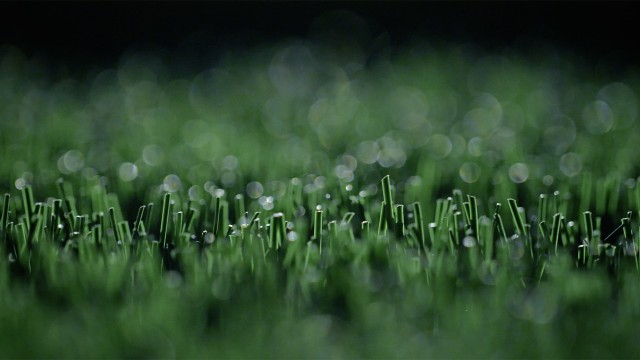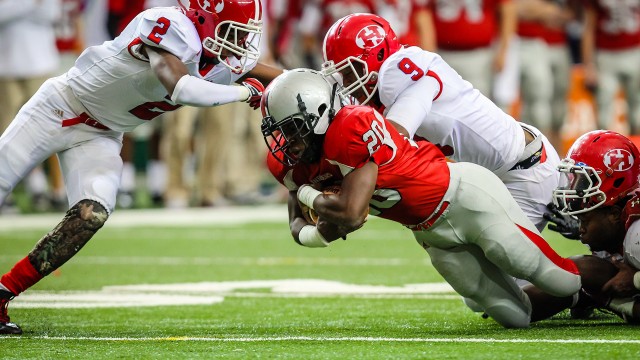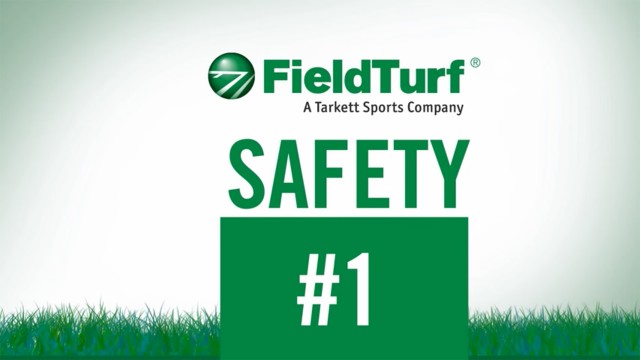Любая компания может заявить о том, что предлагает безопасные покрытия.
ОДНАКО, ЕСЛИ РЕЧЬ ЗАХОДИТ О ДОКАЗАННОЙ БЕЗОПАСНОСТИ ДЛЯ ВАШИХ ДЕТЕЙ И СПОРТСМЕНОВ, НА ПЕРВЫЙ ПЛАН ВЫХОДИТ ТОЛЬКО ОДНА КОМПАНИЯ — FIELDTURF.
Нельзя предотвратить травмы, но можно ограничить их
Безопасность ваших спортсменов является и всегда будет являться нашим главным приоритетом. Каждый день мы открываем новые горизонты исследований и инноваций, разрабатывая самые современные системы искусственных травяных покрытий в отрасли. Хотя ни один вид спорта не может полностью обойтись без травм, мы продолжаем находить новые способы снижения риска и тяжести травм. Благодаря нашему стремлению к безопасности, было разработано множество способов и инноваций по снижению травмоопасности. В итоге, у нас есть продукты и опыт, чтобы помочь вам сделать игровое поле максимально безопасным для ваших спортсменов. Независимое многолетнее исследование подтверждает наши усилия по созданию для вас и ваших спортсменов самого безопасного поля из всех возможных.
СТУДЕНЧЕСКИЙ ФУТБОЛ
Сравнение FieldTurf с натуральной травой
Трехлетнее исследование
Системы FieldTurf обеспечили:
- На 13 % меньше мышечных растяжений и разрывов
- На 11 % меньше сотрясений мозга
- На 31 % меньше разрывов связок
- На 24 % меньше растяжений верхних связок голеностопа
- На 21 % меньше тяжелых травм
- На 23 % меньше травм на покрытиях для возраста 4–8 и более лет
Школьный футбол
Сравнение FieldTurf с натуральной травой
Пятилетнее исследование
Системы FieldTurf обеспечили:
- На 44 % меньше механических травм в целом
- На 43 % меньше травм передних крестообразных связок в целом
- На 25 % меньше травм, начиная от травм с потерей времени и заканчивая долговременными травмами (от 22 дней)
- На 16 % меньше травм, начиная от травм с потерей времени и заканчивая кратковременными травмами (1–2 дня)
HIGH SCHOOL FOOTBALL
FIELDS WITH SHOCK PADS VS FIELDS WITHOUT
7-year study
Fields without pads led to:
- 53% less player-to-turf collision injuries
- 39% less shoulder girdle trauma
- 63% less lower leg injuries
- 73% less neck trauma
When are shock pads recommended?
There are some situations where a shock pad is highly recommend. When installing light-weight infill systems, common with alternative / natural infills like cork, coconut and/or olive, there isn’t enough material in the system to provide the necessary shock absorption. To meet the needed industry safety requirements, a shock pad is added under the system to provide the adequate performance.
HIGH SCHOOL FOOTBALL
heavyweight infill VS other infill weight surfaces
7-year study
Systems with >9 lbs per square foot of infill compared to all other infill weight surfaces led to:
- 19%-29% lower incidence of total injuries
- 35%-55% lower incidence of Substantial injuries
- 19%-26% lower incidence of severe injuries
- 32%-47% lower incidence of player-to-turf injuries
- 17%-22% lower incidence of Ligament Sprains and Tears
- 58%-63% lower incidence of injuries on surfaces aged 8+ years, vs systems with 0-5.9 lbs per square foot
NATIONAL FOOTBALL LEAGUE
FIELDTURF VS NATURAL GRASS & COMPETING SYSTEMS
4-year study
ACL Injury Rate per Team Games Played:
- .048 FieldTurf
- .050 Natural Grass
- .053 Competing Turf Systems
NATIONAL FOOTBALL LEAGUE
FIELDTURF VS NATURAL GRASS
7-year study
Achilles Tendon Injuries:
When analyzing the rates of achilles tendon tear while comparing ground surfaces (grass and artificial turf), we revealed no significant difference in tear rates.
COLLEGE men's soccer
FIELDTURF VS NATURAL GRASS
6-year study
FieldTurf systems led to:
- 25% Fewer Total Injuries
- 20% Fewer Severe Injuries
- 33% Fewer Concussions
- 15% Fewer Injuries due to player-to-surface collisions
COLLEGE women's soccer
FIELDTURF VS NATURAL GRASS
5-year study
FieldTurf systems led to:
- 11% Fewer Total Injuries
- 33% Fewer Severe Injuries
- 57% Fewer Injuries on Surfaces 8+ years old
- 17% Fewer Injuries in Rain-Field Conditions
United Soccer League, League 1
Artificial Turf vs Grass
Three Seasons - 2020-2022
Study concluded: Overall, the incidence of injuries per athlete exposure was significantly lower on artificial turf than natural grass. Injuries subdivided into location demonstrate statistically lower rates of head/neck, upper limb, and lower limb injuries on artificial turf. Additionally, with regards to type of injury, the rate of contusions and central/peripheral nervous system injuries were statistically lower on artificial turf.
Amateur Soccer
Artificial Turf vs Grass
Skin Abrasions Due to Sliding on Playing Surface
Study concluded: No evidence of more skin related traumatic injuries when a slide was performed on artificial turf compared to natural grass.
Высшая футбольная лига
Сравнение искусственного и травяного покрытий
Четырехлетнее исследование
Проведенное исследование: Общее количество травм на искусственном покрытии «не уступает» или эквивалентно количеству травм на травяном покрытии.
College Men's & Women's Soccer
Artificial Turf VS Natural Grass
10-year study
Study concluded: NCAA soccer players who practice on natural grass have increased risk of ACL injury (8.67 times more likely) compared with the risk of those practicing on an artificial surface, regardless of sex or NCAA division of play. No difference in risk of ACL injury between playing surfaces was detected during matches.
Effects of Playing Surface on Physical, Physiological and Perceptual Responses
artificial vs grass
Study concluded:
- An improved physical performance on artificial turf compared to natural grass.
- Performance tasks incorporating greater reliance on agility and change of direction ability are more likely to be enhanced on artificial turf compared to natural grass.
- The improved physical performance on artificial turf was accompanied by improved perceptual and some blood biochemistry (Lac, Neu and LYM) responses.
Italian Major League - Soccer
Artificial Turf vs Grass
One Season of Division I Play
Study concluded: No difference in injury risk on natural grass and artificial turf in elite professional soccer athletes.



